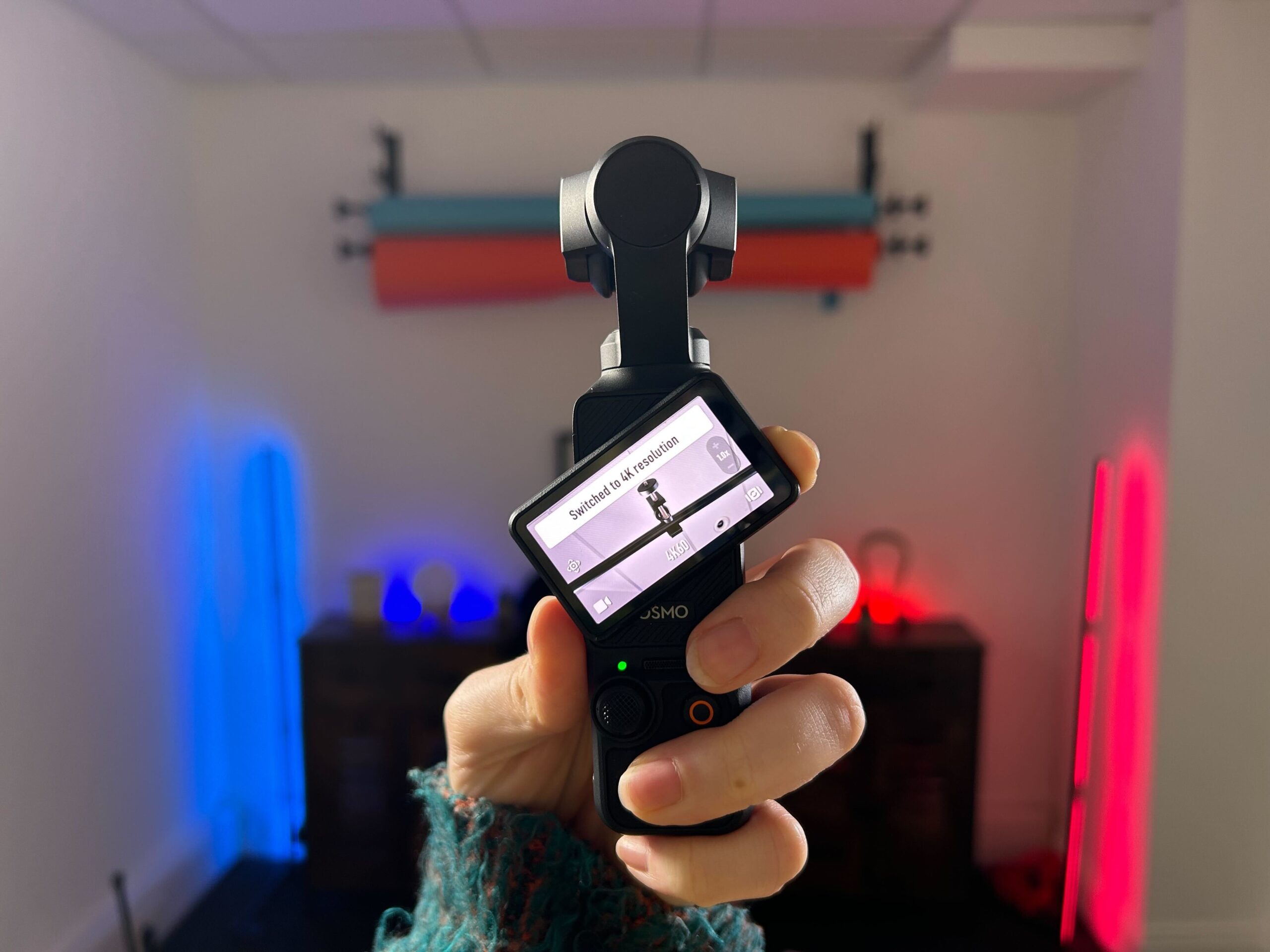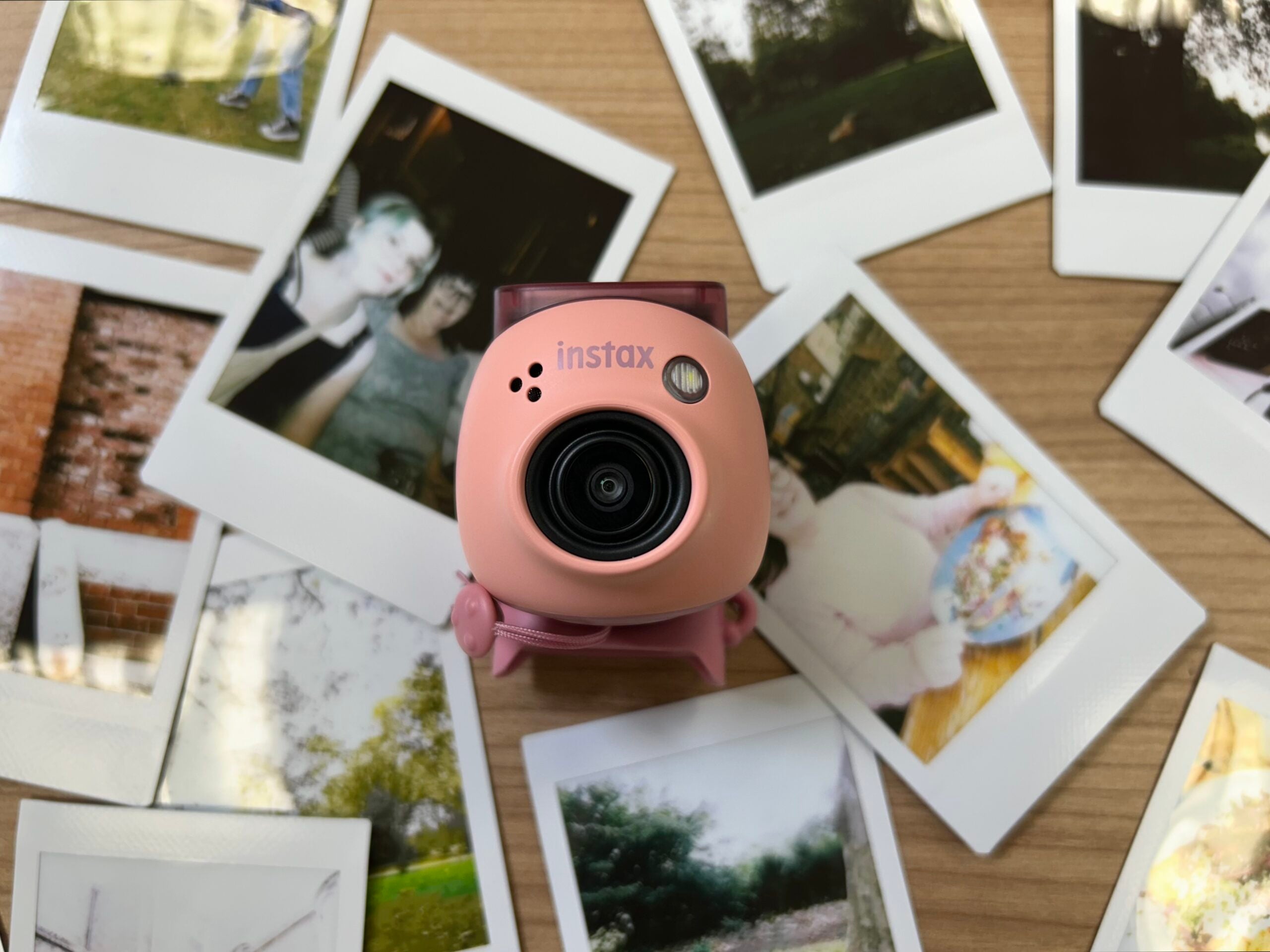Fujifilm X-H2 Review
A powerful performer when it comes to both photo and video
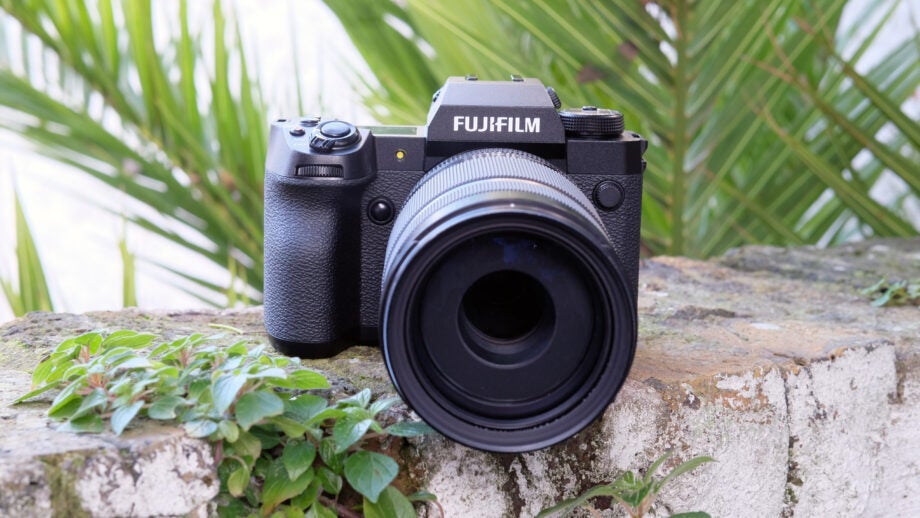

Verdict
Fujifilm’s ground-breaking APS-C camera is a powerful performer when it comes to both photo and video – and it’s available at a reasonable price.
Pros
- Superb detail from compact APS-C body
- 8K and Apple ProRes video recording
Cons
- Not the best low-light performer
- Pricey CFexpress Type B card required for some functions
Availability
- UKRRP: £1879
Key Features
- Brand new sensorThe X-H2 has a 40.2-megapixel X-Trans CMOS sensor on board – the highest resolution APS-C sensor currently available
- 8K video recordingThe X-H2 can record 8K and 6.2K video clips at up to 30fps, C4K and 4K clips at up to 60fps and Full HD clips at up to 240fps
- Same design as X-H2SThe X-H2 is very similar to its pricier X-H2S stablemate: same control layout, articulated screen, rugged build and processor
- AI-assisted autofocusThe camera’s subject-detection AF can recognise humans, animals, birds, cars, motorcycles, airplanes and trains, tracking them automatically
Introduction
The Fujifilm X-H2 is something of a ground-breaker: with 40.2-megapixels, it has (along with its stablemate the X-T5) the highest resolution APS-C sensor on the market.
This sensor – a non-stacked, rear-illuminated X-Trans CMOS – is designed with detail in mind, prioritising it over the speed offered by a stacked sensor.
In almost all other aspects, the X-H2 is identical to Fujifilm’s existing X-H2S. The X-H2S, which now sits above the X-H2 in Fujifilm’s X-Series range (and costs a lot more) uses a 26.1-megapixel stacked sensor, but the two models have the same processor, chassis, control layout, viewfinder, screen and connectivity.
To put it in its simplest terms, the X-H2S is built for speed and low-light capabilities, while the X-H2 is built for detail.
Design and handling
- Lightweight but rugged and weatherproof build
- Same PASM mode dial and controls as X-H2S
- Always-on top plate display provides vital info
As mentioned above, the X-H2 is physically virtually identical to the X-H2S – which is a good thing in our book. Like many mirrorless cameras, it’s lightweight (660g including a battery and memory card, but no lens) and relatively compact at 136.3 x 92.9 x 84.6mm, making it ideal for long shooting expeditions and (with a small lens) discreet enough for street photography. It’s also solidly constructed, and weather sealed against moisture and dust, with the ability to operate in temperatures as low as -10ºC/14ºF.
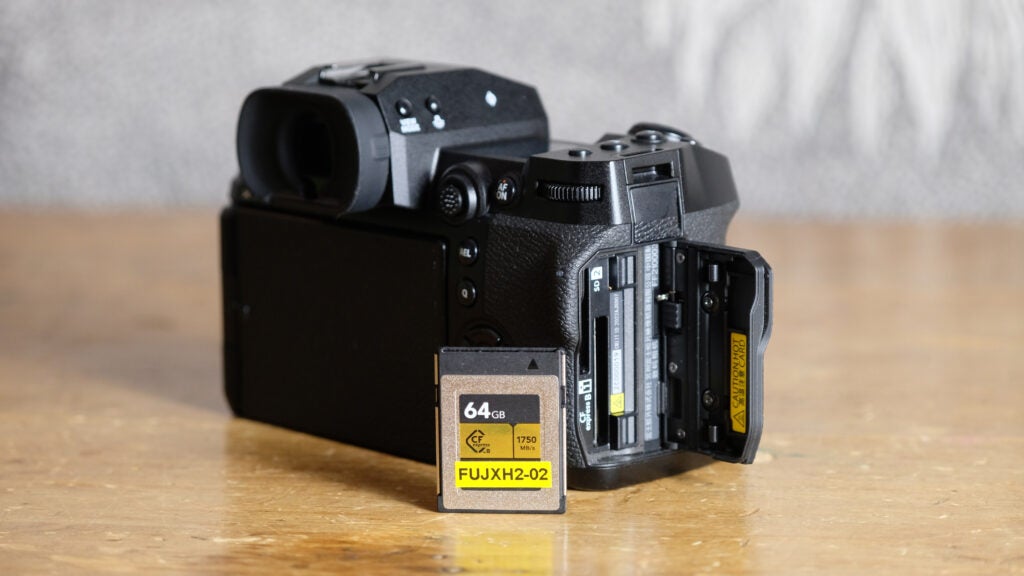
When it comes to controls, Fujifilm cameras used to eschew the PASM mode dial approach taken by most of its rivals, instead opting for dials for shutter speed and ISO. That’s changed in recent years, and the brand now offers cameras with both setups. The X-H2 goes with the PASM approach, which probably makes it easier to get to grips with if you’ve been using Canon, Nikon, Sony or Panasonic gear previously.
In any case, I found the camera in general a joy to use, with a logical control layout, easily accessible buttons and a classically ergonomic DSLR-style chassis design; there’s a dedicated video record button which (while small) can be used even if you’re shooting in one of the still photography modes, which is always welcome. The always-on LCD panel on the top plate is a nice and potentially time-saving touch too, giving you at-a-glance info about shooting settings and more.
The range of connections is impressive, with full-size HDMI, a fast USB-C port (for power supply, battery charging and data transfer), 3.5mm mic and headphone jacks and a 2.5mm remote control port, plus Wi-Fi and Bluetooth.
There are two card slots available: one for SD cards and one for the newer CFexpress Type B cards. That means you can have up to 4TB of storage (2TB for each card) in the camera at any one time, while the CFexpress Type B slot’s high write speeds allow you to access some of the camera’s more demanding functions (20fps electronic shutter continuous shooting for over 1000 frames and video recording using the Apple ProRes codec).
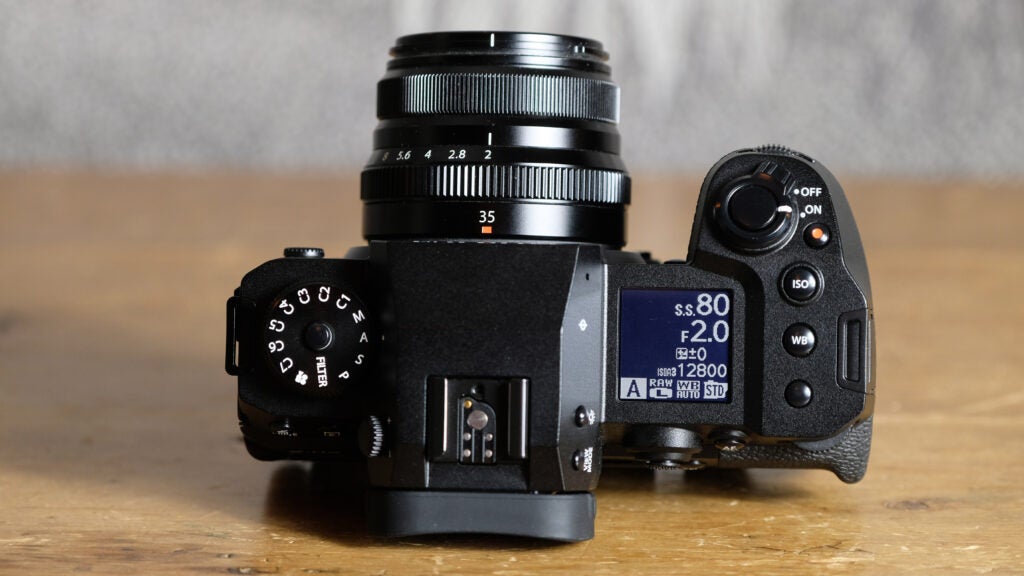
Viewfinder and screen
- 0.8x magnification OLED viewfinder with 5.76 million dots
- 3-inch vari-angle touch screen monitor with 1.62 million dots
- Touch settings include touch zoom and touch focus
The 0.5-inch OLED electronic viewfinder is beautifully crisp and clear thanks to its 5.76-million dot resolution and fast refresh rate of 120fps. There’s not much else to say about it; it does exactly what it needs to do.
I also found the rear screen to be well designed: this 3-inch LCD is fully articulated, allowing it to be pointed in almost any direction, including frontwards – a must for vloggers and selfie addicts. It has a 1.62-million dot resolution, is bright enough to be usable on all but the sunniest of days and is touch sensitive, and while I mostly used it to quickly set autofocus points, you can also use it to swipe through your images in playback mode.

Image quality and performance
- Crisp 40-megapixel photos and 8K video
- Fast continuous shooting and Apple ProRes video capture
- Impressive AI-assisted tracking autofocus
With just over 40 megapixels at its disposal, the X-H2 is designed with detail in mind, and anyone valuing superbly sharp images will have a field day putting this camera through its paces.
For still photos it can capture up to 7728 x 5152 pixels, while the Pixel Shift Multi Shot mode (which requires a tripod but combines multiple shots into a single super hi-res image) can serve up images with a staggering 160 megapixels of resolution. For video, it can capture up to 8K footage (7680 x 4320) at 30fps.

There are full-frame and medium-format mirrorless cameras with higher resolutions than this, yes – but because the X-H2 has an APS-C sensor it generally uses cheaper, lighter lenses than these larger sensor competitors. That makes this one of the most budget-friendly hi-res cameras on the market, particularly if you’re planning on buying multiple lenses in the future.
I found image quality to be fantastic straight out of the camera and you may get even better results by shooting in RAW and processing using Lightroom or similar. Detail is rich and sharp, as you’d expect, but there’s a pleasing tonality and dynamic range to images as well. When lighting is a little more challenging however, you might miss the speed of the X-H2S – despite a purported 7 stops of image stabilisation and an ISO range of 125 to 51200 (25600 for video), this doesn’t feel like a camera that’s truly at home in the dark and noise and softness can become a problem.

Still, the X-H2 is a powerful performer for the price, especially with a CFexpress card inside. It can shoot stills continuously at up to 15fps with its (extremely quiet) mechanical shutter and up to 20fps with electronic shutter, and its autofocus setup is both quick and accurate, with AI-assisted recognition for subjects including humans (including eyes and faces), animals, birds, cars, bikes, aeroplanes and trains. I flicked it to the bird detection setting and found it brilliant at tracking moving birds in the air, in the water and on the ground.

The X-H2 also comes with the same X-Processor 5 as the X-H2S, which improves performance and brings in new features like HEIF stills shooting (HEIF files are smaller than JPEGs) and support for Apple ProRes video recording.
Even if you don’t use ProRes (which is a superb codec for post-production editing and colour correction), there’s plenty to admire about the X-H2’s video performance. If detail is key, you can record 8K footage at up to 30fps, as well as 4K and C4K at up to 60fps and slow-motion footage (in Full HD) at up to 240fps. I’ve edited together some footage I recorded at 8K and 4K into a short 4K sample clip to give you an idea of what you can expect with no colour correction or grading.
Latest deals
Should you buy it?
You value detail above all: Pair the X-H2’s 40-megapixel sensor with a good quality lens and the result is detail – lots of it. It can also capture pristine-looking 8K video.
You shoot in all conditions: The X-H2 isn’t the best for low-light shooting; if you’re a night owl you’ll want to look at the X-H2S instead.
Final Thoughts
While it may seem outwardly similar to the existing X-H2S, the Fujifilm X-H2 has its own personality and own role to fill in the manufacturer’s X-Series line-up. Built for detail thanks to an impressive 40-megapixel sensor and significantly more affordable than its stablemate, it’s a true all-rounder that is equally at home recording 8K video or capturing incredibly rich still photos.
Well-constructed, weatherproof and lightweight, it also has a fantastic articulated screen, a large and bright OLED viewfinder and excellent connectivity, plus a control layout that few will have problems getting to grips with. All in all, Fujifilm has delivered a camera that might be the company’s most widely appealing X-Series model yet and one of the best cameras around.
How we test
We test every camera we review thoroughly. We use set tests to compare features properly and we use it as our main device over the review period. We’ll always tell you what we find and we never, ever, accept money to review a product.
Used the camera for a week
Captured both photos and video with various settings
Tested the camera’s performance in low light
FAQs
There are two card slots, both taking up to 2TB cards – so you could have up to 4TB.

